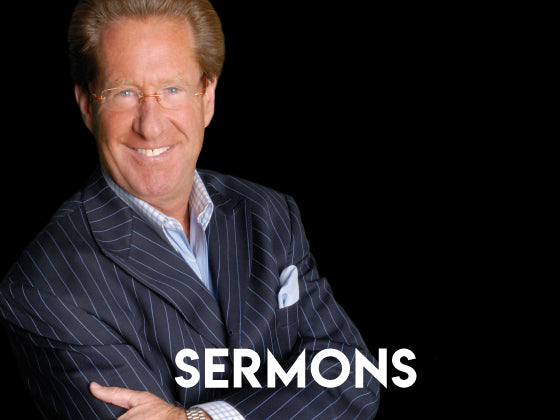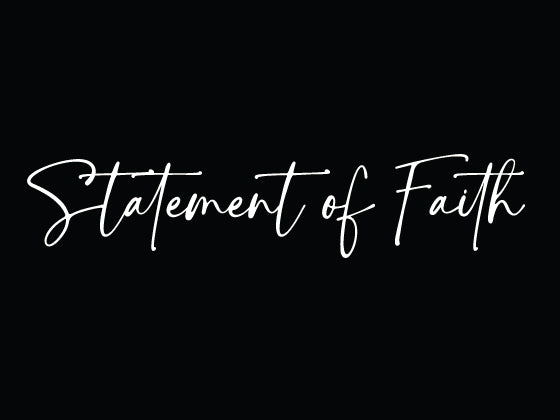Today's Scriptures | Exodus 27-28 and Matthew 21:23-46
Exodus 27-28
The Altar of Burnt Offering
27 “Build an altar of acacia wood, three cubits[a] high; it is to be square, five cubits long and five cubits wide.[b] 2 Make a horn at each of the four corners, so that the horns and the altar are of one piece, and overlay the altar with bronze.3 Make all its utensils of bronze—its pots to remove the ashes, and its shovels, sprinkling bowls, meat forks and firepans. 4 Make a grating for it, a bronze network, and make a bronze ring at each of the four corners of the network.5 Put it under the ledge of the altar so that it is halfway up the altar. 6 Make poles of acacia wood for the altar and overlay them with bronze. 7 The poles are to be inserted into the rings so they will be on two sides of the altar when it is carried.8 Make the altar hollow, out of boards. It is to be made just as you were shown on the mountain.
The Courtyard
9 “Make a courtyard for the tabernacle. The south side shall be a hundred cubits[c] long and is to have curtains of finely twisted linen, 10 with twenty posts and twenty bronze bases and with silver hooks and bands on the posts. 11 The north side shall also be a hundred cubits long and is to have curtains, with twenty posts and twenty bronze bases and with silver hooks and bands on the posts.
12 “The west end of the courtyard shall be fifty cubits[d] wide and have curtains, with ten posts and ten bases. 13 On the east end, toward the sunrise, the courtyard shall also be fifty cubits wide. 14 Curtains fifteen cubits[e] long are to be on one side of the entrance, with three posts and three bases, 15 and curtains fifteen cubits long are to be on the other side, with three posts and three bases.
16 “For the entrance to the courtyard, provide a curtain twenty cubits[f] long, of blue, purple and scarlet yarn and finely twisted linen—the work of an embroiderer—with four posts and four bases. 17 All the posts around the courtyard are to have silver bands and hooks, and bronze bases. 18 The courtyard shall be a hundred cubits long and fifty cubits wide,[g] with curtains of finely twisted linen five cubits[h] high, and with bronze bases. 19 All the other articles used in the service of the tabernacle, whatever their function, including all the tent pegs for it and those for the courtyard, are to be of bronze.
Oil for the Lampstand
20 “Command the Israelites to bring you clear oil of pressed olives for the light so that the lamps may be kept burning. 21 In the tent of meeting, outside the curtain that shields the ark of the covenant law, Aaron and his sons are to keep the lamps burning before the Lord from evening till morning. This is to be a lasting ordinance among the Israelites for the generations to come.
The Priestly Garments
28 “Have Aaron your brother brought to you from among the Israelites, along with his sons Nadab and Abihu, Eleazar and Ithamar, so they may serve me as priests. 2 Make sacred garments for your brother Aaron to give him dignity and honor. 3 Tell all the skilled workers to whom I have given wisdom in such matters that they are to make garments for Aaron, for his consecration, so he may serve me as priest. 4 These are the garments they are to make: a breastpiece, an ephod, a robe, a woven tunic, a turban and a sash. They are to make these sacred garments for your brother Aaron and his sons, so they may serve me as priests. 5 Have them use gold, and blue, purple and scarlet yarn, and fine linen.
The Ephod
6 “Make the ephod of gold, and of blue, purple and scarlet yarn, and of finely twisted linen—the work of skilled hands. 7 It is to have two shoulder pieces attached to two of its corners, so it can be fastened. 8 Its skillfully woven waistband is to be like it—of one piece with the ephod and made with gold, and with blue, purple and scarlet yarn, and with finely twisted linen.
9 “Take two onyx stones and engrave on them the names of the sons of Israel10 in the order of their birth—six names on one stone and the remaining six on the other. 11 Engrave the names of the sons of Israel on the two stones the way a gem cutter engraves a seal. Then mount the stones in gold filigree settings12 and fasten them on the shoulder pieces of the ephod as memorial stones for the sons of Israel. Aaron is to bear the names on his shoulders as a memorialbefore the Lord. 13 Make gold filigree settings 14 and two braided chains of pure gold, like a rope, and attach the chains to the settings.
The Breastpiece
15 “Fashion a breastpiece for making decisions—the work of skilled hands. Make it like the ephod: of gold, and of blue, purple and scarlet yarn, and of finely twisted linen. 16 It is to be square—a span[i] long and a span wide—and folded double. 17 Then mount four rows of precious stones on it. The first row shall be carnelian, chrysolite and beryl; 18 the second row shall be turquoise, lapis lazuli and emerald; 19 the third row shall be jacinth, agate and amethyst; 20 the fourth row shall be topaz, onyx and jasper.[j] Mount them in gold filigree settings.21 There are to be twelve stones, one for each of the names of the sons of Israel,each engraved like a seal with the name of one of the twelve tribes.
22 “For the breastpiece make braided chains of pure gold, like a rope. 23 Make two gold rings for it and fasten them to two corners of the breastpiece. 24 Fasten the two gold chains to the rings at the corners of the breastpiece, 25 and the other ends of the chains to the two settings, attaching them to the shoulder pieces of the ephod at the front. 26 Make two gold rings and attach them to the other two corners of the breastpiece on the inside edge next to the ephod.27 Make two more gold rings and attach them to the bottom of the shoulder pieces on the front of the ephod, close to the seam just above the waistband of the ephod. 28 The rings of the breastpiece are to be tied to the rings of the ephod with blue cord, connecting it to the waistband, so that the breastpiece will not swing out from the ephod.
29 “Whenever Aaron enters the Holy Place, he will bear the names of the sons of Israel over his heart on the breastpiece of decision as a continuing memorial before the Lord. 30 Also put the Urim and the Thummim in the breastpiece, so they may be over Aaron’s heart whenever he enters the presence of the Lord. Thus Aaron will always bear the means of making decisions for the Israelites over his heart before the Lord.
Other Priestly Garments
31 “Make the robe of the ephod entirely of blue cloth, 32 with an opening for the head in its center. There shall be a woven edge like a collar[k] around this opening, so that it will not tear. 33 Make pomegranates of blue, purple and scarlet yarn around the hem of the robe, with gold bells between them. 34 The gold bells and the pomegranates are to alternate around the hem of the robe.35 Aaron must wear it when he ministers. The sound of the bells will be heard when he enters the Holy Place before the Lord and when he comes out, so that he will not die.
36 “Make a plate of pure gold and engrave on it as on a seal: holy to the Lord.37 Fasten a blue cord to it to attach it to the turban; it is to be on the front of the turban. 38 It will be on Aaron’s forehead, and he will bear the guilt involved in the sacred gifts the Israelites consecrate, whatever their gifts may be. It will be on Aaron’s forehead continually so that they will be acceptable to the Lord.
39 “Weave the tunic of fine linen and make the turban of fine linen. The sash is to be the work of an embroiderer. 40 Make tunics, sashes and caps for Aaron’s sonsto give them dignity and honor. 41 After you put these clothes on your brother Aaron and his sons, anoint and ordain them. Consecrate them so they may serve me as priests.
42 “Make linen undergarments as a covering for the body, reaching from the waist to the thigh. 43 Aaron and his sons must wear them whenever they enter the tent of meeting or approach the altar to minister in the Holy Place, so that they will not incur guilt and die.
“This is to be a lasting ordinance for Aaron and his descendants.
Matthew 21:23-46
The Authority of Jesus Questioned
23 Jesus entered the temple courts, and, while he was teaching, the chief priests and the elders of the people came to him. “By what authority are you doing these things?” they asked. “And who gave you this authority?”
24 Jesus replied, “I will also ask you one question. If you answer me, I will tell you by what authority I am doing these things. 25 John’s baptism—where did it come from? Was it from heaven, or of human origin?”
They discussed it among themselves and said, “If we say, ‘From heaven,’ he will ask, ‘Then why didn’t you believe him?’ 26 But if we say, ‘Of human origin’—we are afraid of the people, for they all hold that John was a prophet.”
27 So they answered Jesus, “We don’t know.”
Then he said, “Neither will I tell you by what authority I am doing these things.
The Parable of the Two Sons
28 “What do you think? There was a man who had two sons. He went to the first and said, ‘Son, go and work today in the vineyard.’
29 “‘I will not,’ he answered, but later he changed his mind and went.
30 “Then the father went to the other son and said the same thing. He answered, ‘I will, sir,’ but he did not go.
31 “Which of the two did what his father wanted?”
“The first,” they answered.
Jesus said to them, “Truly I tell you, the tax collectors and the prostitutes are entering the kingdom of God ahead of you. 32 For John came to you to show you the way of righteousness, and you did not believe him, but the tax collectors and the prostitutes did. And even after you saw this, you did not repent and believe him.
The Parable of the Tenants
33 “Listen to another parable: There was a landowner who planted a vineyard. He put a wall around it, dug a winepress in it and built a watchtower. Then he rented the vineyard to some farmers and moved to another place. 34 When the harvest time approached, he sent his servants to the tenants to collect his fruit.
35 “The tenants seized his servants; they beat one, killed another, and stoned a third. 36 Then he sent other servants to them, more than the first time, and the tenants treated them the same way. 37 Last of all, he sent his son to them. ‘They will respect my son,’ he said.
38 “But when the tenants saw the son, they said to each other, ‘This is the heir.Come, let’s kill him and take his inheritance.’ 39 So they took him and threw him out of the vineyard and killed him.
40 “Therefore, when the owner of the vineyard comes, what will he do to those tenants?”
41 “He will bring those wretches to a wretched end,” they replied, “and he will rent the vineyard to other tenants, who will give him his share of the crop at harvest time.”
42 Jesus said to them, “Have you never read in the Scriptures:
“‘The stone the builders rejected
has become the cornerstone;
the Lord has done this,
and it is marvelous in our eyes’[a]?
43 “Therefore I tell you that the kingdom of God will be taken away from you and given to a people who will produce its fruit. 44 Anyone who falls on this stone will be broken to pieces; anyone on whom it falls will be crushed.”[b]
45 When the chief priests and the Pharisees heard Jesus’ parables, they knew he was talking about them. 46 They looked for a way to arrest him, but they were afraid of the crowd because the people held that he was a prophet.










